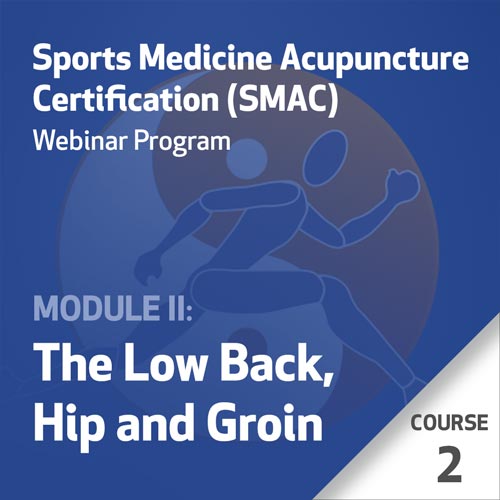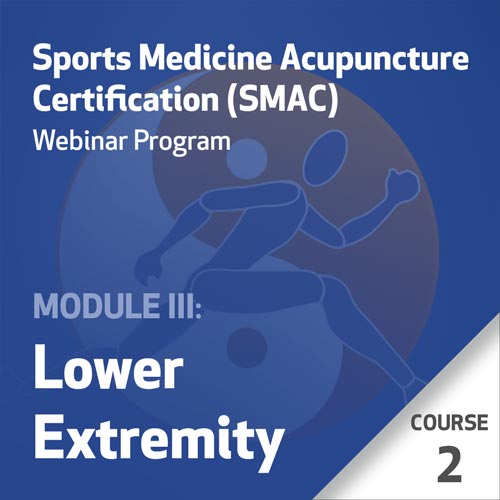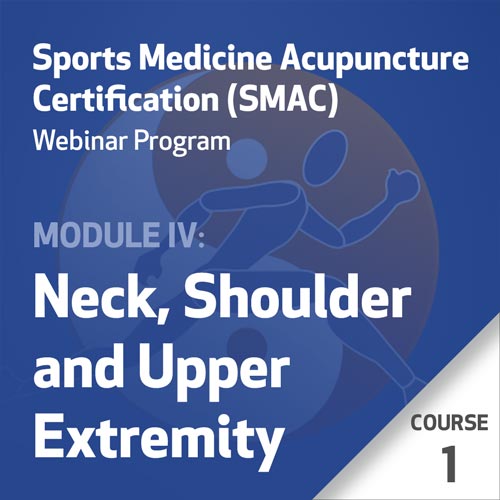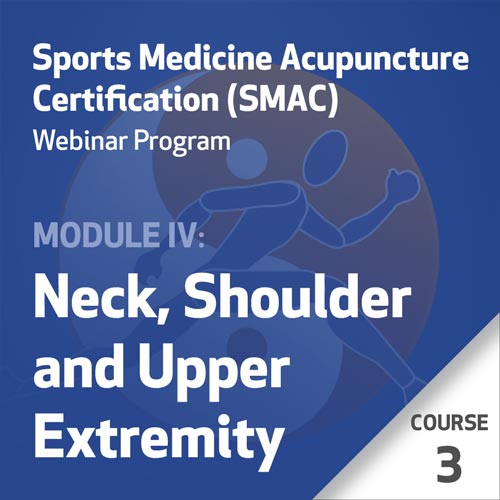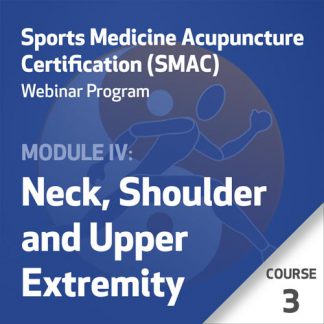Course Overview
This 2-day anatomy and cadaver webinar is an amazing integration of sports medicine functional anatomy and TCM sinews (jingjin) channel theory. Each day of this workshop is divided into distinct morning and afternoon sessions. The morning session consists of didactic presentations on Functional Anatomy and Anatomy of the Sinew Channels that are integrated to focus on the functional relationship between neuromuscular anatomy and the myofascial jingjin tissues and their relationship to the spinal column. This information is followed by the afternoon session that consists of: 1) Assessment, 2) Motor Point Location and Protocols, 3) Cadaver Presentations.
Objectives
-
Learn myofascial pathways that correlate with the spinal column and classical sinew channels of TCM and the tissues belonging to each sinew channel with their functional anatomy relationship.
-
Learn in theory how to determine which my myofascial sinew channels need to be assessed and treated for musculoskeletal injury.
-
Learn normal and abnormal movement patterns of the spinal column. Understand vertebral fixations and facilitated segments.
-
The practitioner will learn nerve pathways, dermatomal distributions and muscle myotomes in relationship to channel topography.
-
The practitioner will learn postural, functional and muscle imbalances that can lead to pain and dysfunction based on TCM theory.
Outline
0 hrs - 1.75 hrs
Introduction and Functional Anatomy: The Spinal Column. Anatomy and functional movement of the spinal column.
1.75 hrs - 3.5 hrs
Introduction to Anatomy of the Sinew Channels. Topography and tissues involved of the associated jingjin and functional anatomy.
3.5 hrs - 4.75 hrs
Instruction for assessing areas that the practitioner will need to understand that are directly associated with the spinal column.
4.75 hrs - 6 hrs
Motor point location Lab-instruction for acupuncture and motor points that the practitioner will need to understand that is directly associated with the spinal column and vertebral fixations.
6 hrs - 7.5 hrs
Cadaver Lab- Cadaver specimen views are presented relevant and directly associated with the spinal column and vertebral fixations.
7.5 hrs - 9.25 hrs
Functional Anatomy: The Spinal Column. Anatomy and functional movement of the spinal column.
9.25 hrs - 11 hrs
Anatomy of the Sinew Channels. Topography and tissues involved of the associated jingjin and functional anatomy.
11 hrs - 12.25 hrs
Instruction for assessing areas that the practitioner will need to understand that are directly associated with the spinal column.
12.25 hrs - 13.5 hrs
Motor Point Location Lab-Motor point location instruction for acupuncture and motor points that the practitioner will need to understand that is directly associated with the spinal column and vertebral fixations.
13.5 hrs - 15 hrs
Cadaver Lab Cadaver specimen views are presented relevant and directly associated with the spinal column and vertebral fixations.
Reviews
-
Andrew C. (United States of America)
Must have if you do or want to do sports medicine
-
Christopher H. (United States of America)
I am glad I am finally getting around to being able to take the SMAC courses. Unfortunately, I did not have the time to do so while I was in school getting my degree, but this has been an exceptional continuing education course and I look forward to integrating what I've learned into my practice. I will definitely continue and take the sequential SMAC courses and would recommend these continuing education courses to all acupuncturists.
-
John H. (United States of America)
Hands down the best Orthopedic manual for the acupuncturist. There is no other professional text I refer to more often then this manual. Laymen to seasoned master, this book in indispensable.
Reviews
Must have if you do or want to do sports medicine
Andrew C. (United States of America)
I am glad I am finally getting around to being able to take the SMAC courses. Unfortunately, I did not have the time to do so while I was in school getting my degree, but this has been an exceptional continuing education course and I look forward to integrating what I've learned into my practice. I will definitely continue and take the sequential SMAC courses and would recommend these continuing education courses to all acupuncturists.
Christopher H. (United States of America)
Hands down the best Orthopedic manual for the acupuncturist. There is no other professional text I refer to more often then this manual. Laymen to seasoned master, this book in indispensable.
John H. (United States of America)
I highly recommend this course. Wish I had this in my tool box earlier in practice.
marilyn v. (United States of America)
Top notch instruction, excellent melding of TCM and Western understanding of anatomy and physiology.
Darcie I. (United States of America)
Bridging anatomy trains with motor points and TCM! A dream come true to any acupuncturist wanting a deeper dive into understanding the human body! The cadavers are very eye opening too. Grateful for the donors!
Samantha S. (Canada)
The SMAC program is ahead of its time. They are leaders and innovators in the acupuncture community. Their contribution of knowledge is invaluable.
Amanda H. (United States of America)
Amazing course, totally worth my investment. Compiled logically, clear and intelligently delivered and 100% useful clinical information. Thankyou so much for producing this course.
Eleanor C. (New Zealand)
This course is essential not only for those interested in practicing sports medicine, but anyone is interested in treating pain in their practice. The depth of knowledge and insight on anatomical structures and physiology from the instructors truly helps to bridge the gap between Traditional Chinese Medicine and Western Medicine.
James W. (United States of America)
The mass amount of information and limited timeframe that we have to learn everything that is needed to pass board exams causes palpation, anatomy, and more advanced needling techniques to take a backseat. These courses fill the gap in knowledge and application, creating more impactful patient treatments.
Sarah G. (United States of America)
This is unlike any other continuing ed. class that I have taken so far, and I mean that in a good way! The subject matter is new to me and I feel challenged in trying to take all the information in, but I have learned so much already and I have only finished Module 1.
Kristine C. (United States of America)
I highly recommend this online course as a part of the SMAC series. It was presented in a well thought-out manner that was dense yet digestible, and super interesting. This was the first course I've taken in the SMAC series, and I'm excited to continue on learning from these exceptional teachers.
Carlton K. (United States of America)
Matt and Brian are phenomenal at presenting dense material in a clear and engaging manner. Their seminars not only impart information that can be utilized immediately in clinic, they inspire further learning.
Mary Frances P. (United States of America)
This is exactly the direction I wish for Acupuncture to take in this century. Thank you for laying the ground work.
Andrej N. (United States of America)
Teachers
Matt Callison
Matt Callison is a renowned instructor and published author of the Motor Points and Acupuncture Meridians Chart and quintessential texts such as the Motor Point Index (MPI) Reference Guide and Sports Medicine Acupuncture: An Integrated Approach Combining Sports Medicine and Traditional Chinese Medicine. He has over 27 years of experience in sports medicine and acupuncture.
Brian Lau
Brian Lau, AP, CSMA, is certified in both Sports Medicine Acupuncture and Structural Integration. He has been on faculty since 2013 with the Sports Medicine Acupuncture Certification (SMAC) program, where he teaches anatomy and physiology, assessment and treatment of the channel sinews (jingjin), and myofascial release.
Disclaimers
-
Accessing Your Course
After checking out, your email address will be sent to Net of Knowledge securely and you will gain instant access to your course. If you do not have a Net of Knowledge account yet, one will be created for you automatically and you will receive an email with a link to set up your password. Log in to your account at netofknowledge.com and start learning!
-
Unlimited Access & CEUS
You will have unlimited access to this course for as long as it is on Net of Knowledge, so that you can keep reviewing and learning from it over the years.
CEU requirements must be completed within 1 year from the purchase. During this time, you must view the training and complete any required documents to get your certificate. You must also print and save your certificate for your own records.
-
Cancellation Policy
Please note we do not offer refunds for our recorded online courses/webinars.
-
Note
This recording is available in an online format only; you will not receive a DVD or physical copy of the recording – it is only available to watch as a course to watch on the internet through your online account.
















